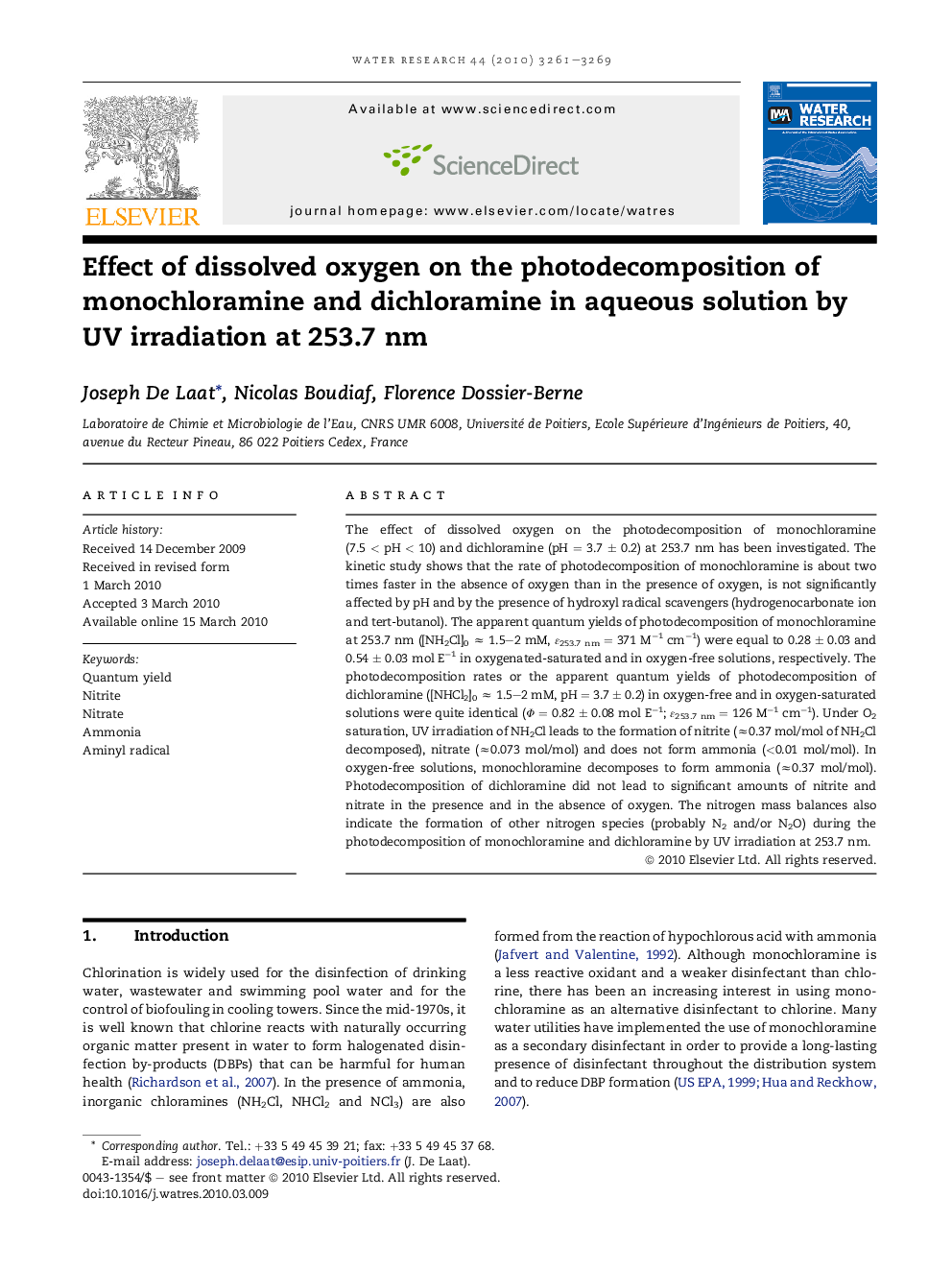| Article ID | Journal | Published Year | Pages | File Type |
|---|---|---|---|---|
| 4485097 | Water Research | 2010 | 9 Pages |
The effect of dissolved oxygen on the photodecomposition of monochloramine (7.5 < pH < 10) and dichloramine (pH = 3.7 ± 0.2) at 253.7 nm has been investigated. The kinetic study shows that the rate of photodecomposition of monochloramine is about two times faster in the absence of oxygen than in the presence of oxygen, is not significantly affected by pH and by the presence of hydroxyl radical scavengers (hydrogenocarbonate ion and tert-butanol). The apparent quantum yields of photodecomposition of monochloramine at 253.7 nm ([NH2Cl]0 ≈ 1.5–2 mM, ɛ253.7 nm = 371 M−1 cm−1) were equal to 0.28 ± 0.03 and 0.54 ± 0.03 mol E−1 in oxygenated-saturated and in oxygen-free solutions, respectively. The photodecomposition rates or the apparent quantum yields of photodecomposition of dichloramine ([NHCl2]0 ≈ 1.5–2 mM, pH = 3.7 ± 0.2) in oxygen-free and in oxygen-saturated solutions were quite identical (Φ = 0.82 ± 0.08 mol E−1; ɛ253.7 nm = 126 M−1 cm−1). Under O2 saturation, UV irradiation of NH2Cl leads to the formation of nitrite (≈0.37 mol/mol of NH2Cl decomposed), nitrate (≈0.073 mol/mol) and does not form ammonia (<0.01 mol/mol). In oxygen-free solutions, monochloramine decomposes to form ammonia (≈0.37 mol/mol). Photodecomposition of dichloramine did not lead to significant amounts of nitrite and nitrate in the presence and in the absence of oxygen. The nitrogen mass balances also indicate the formation of other nitrogen species (probably N2 and/or N2O) during the photodecomposition of monochloramine and dichloramine by UV irradiation at 253.7 nm.
